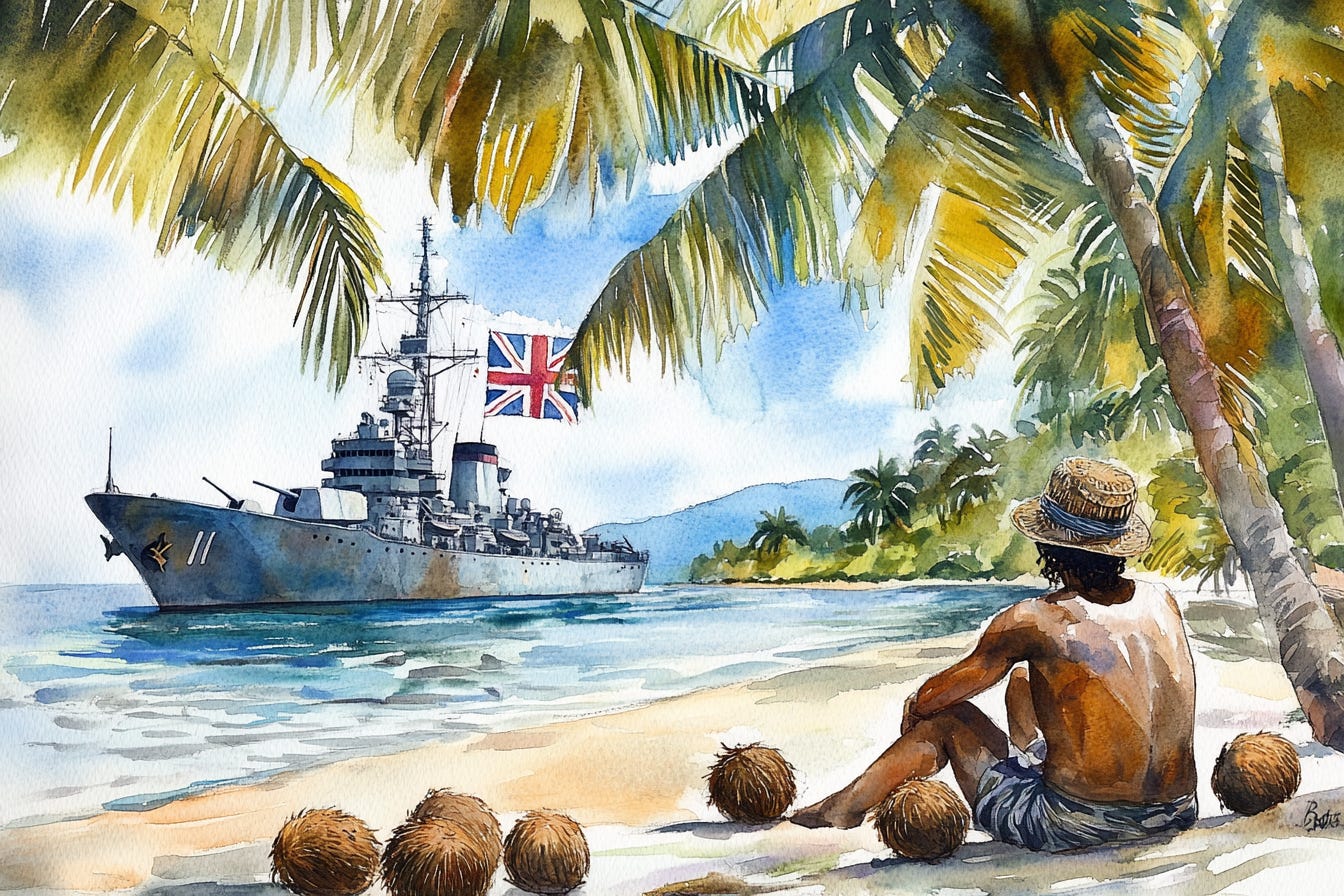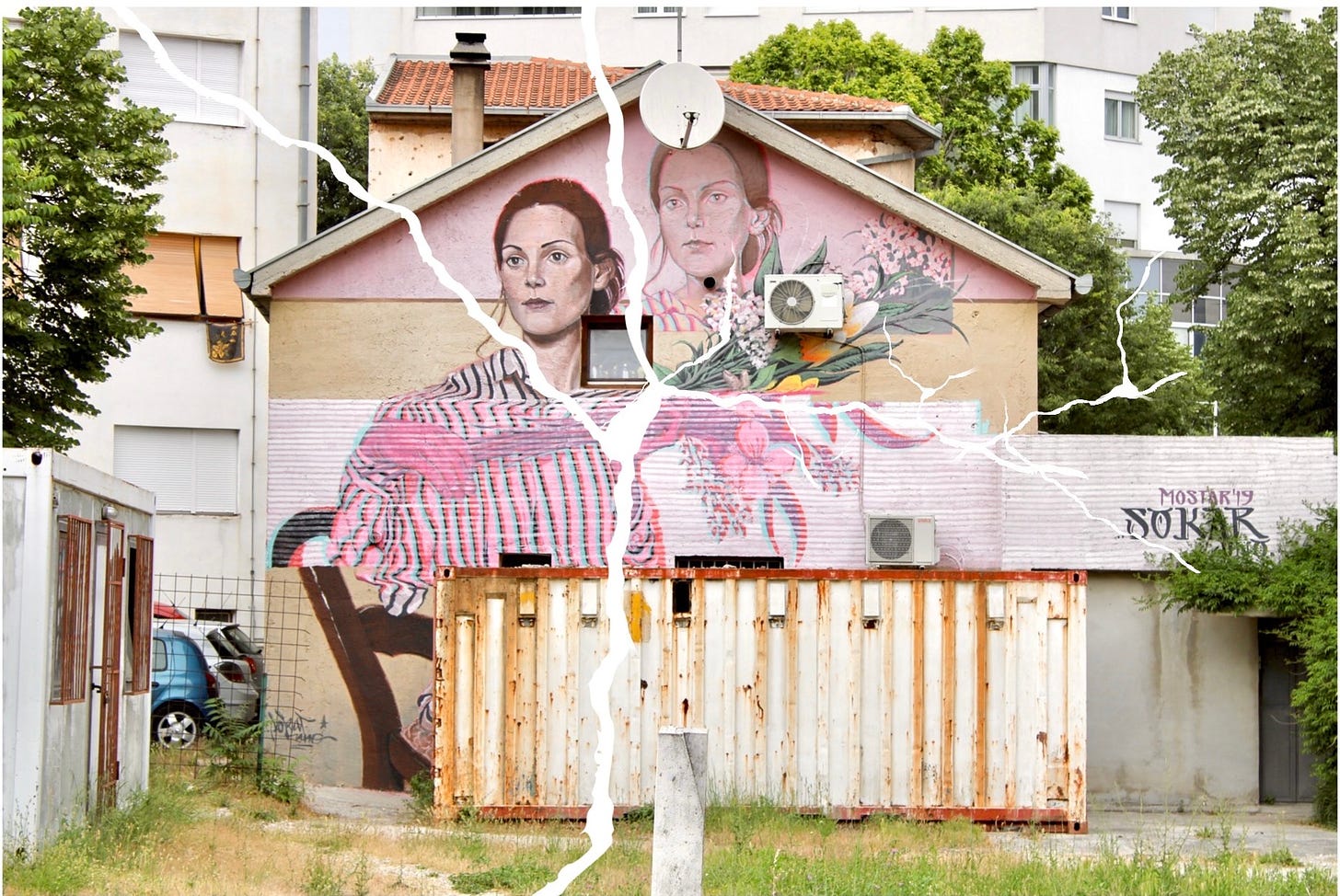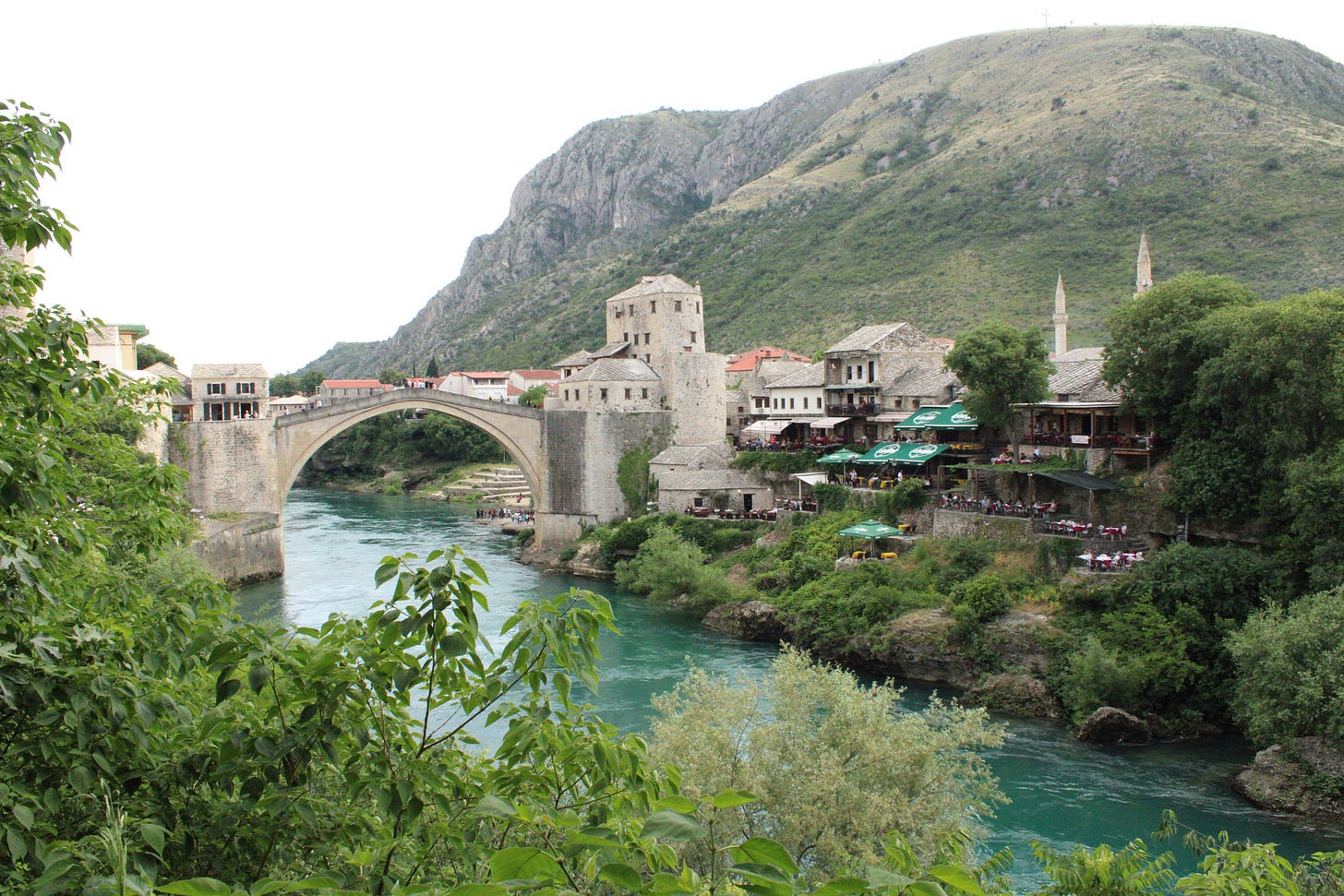Newsletter Week 3 - The Ghost of Galtieri Spooks the Halls of Westminster as Britain’s Returns its Last African Colony
Britain relinquishes an old conquest while a Bosnian city reconnects with its past
Two-hundred-thirty-seven years ago, under the vestiges of the private Sierra Leone Company, the tiny country carrying the same name was to be the first colony in an ever-expanding British Empire. This week marks the official end of British colonialism in Africa, as the UK announced that it would transfer sovereignty to Mauritius over — what many consider its last colony in Africa — the Chagos Archipelago. The archipelago is a small island chain in the middle of the vast Indian Ocean and has until today constituted the British Indian Ocean Territory.
The historic deal comes after years of negotiations between Britain and Mauritius, closely supervised by the United States. What’s at stake for Uncle Sam one might ask? Miniscule in size, most of the atolls making up Chagos are but rings in the vast ocean, with one exception. The island of Diego Garcia. Relatively larger than the rest, is home to an important US Naval base, complete with a port and runway for Long-distance bombers. According to US President Joe Biden, the strategically located base: "plays a vital role in national, regional, and global security."
With the Cold War raging, in 1965, the UK detached Chagos from its then-colony of Mauritius, three years before Mauritius gained its independence, with Mauritius later claiming the UK used the detachment as a prerequisite for independence. The UK then forcibly removed Chagos islanders to Mauritius and Seychelles, and leased the island of Diego Garcia to the United States in return for a $14 million discount on Polaris nuclear missiles. Since 1971, the atoll of Diego Garcia is inhabited by some 3,000 UK and US military and civilian contracted personnel. The British and American governments, have subsequently denied Chagossian requests for the right of return.
Increasingly diplomatically isolated on the issue, facing public outcry and an African Union unanimously pushing for a solution, the new deal will transfer sovereignty to over Chagos to Mauritius, allow for the return of islanders to some of the atolls of Chagos. However notably not included is Diego Garcia, as Mauritius has pledged to honor the U.S. lease for 99 years with possible extension.
Meanwhile the ghost of former military dictator and Argentine strongman, Leopoldo Galtieri, is spooking around in the halls of Westminster. The deal has lead some British lawmakers, amongst them former armed forces minister Mark Francois, to worry that the deal will “embolden nations like Argentina to press for control of the Falklands”. This fear was subsequently backed up as Buenos Aires vowed to gain “full sovereignty” of the British-controlled group of islands in the South Atlantic in the wake of the Chagos deal. Britain still has 13 contested territories in regions from the Mediterranean to the Caribbean, including Gibraltar and the Cayman Islands.
Defenders of the deal, on the other, argue that by continuously refuting the claims of Mauritius and The African Union, the UK, and by extension, The US has played cards straight into the hand of China, as the latter has been able to frame itself as the leader of anti-colonial movement. In 2019, The International Court of Justice, issued an advisory opinion stating that “the process of decolonization of Mauritius was not lawfully completed”. That same year, China ramped up investments and signed a free trade agreement with Mauritius, its first free-trade agreement with any African country. It seems, in this regard, that the islander’s, have again been caught in the great winds of geopolitics.
Photo(s) of the Week:
Two years back I found myself struck by this particular mural while wandering the streets of Mostar, Bosnia & Herzegovina. In a corny attempt to create an emblematic edit capturing the fracturing of Yugoslavia, I added these crude ‘paper tears’ through the image using a now-defunct photoshop app ironically called Union.
Thirty years before American ‘artists’ stumbled their way through it’s cobblestoned streets, Canon in one hand, ice cream in the other, the picturesque town of 100,000 was a gruesome war zone - the site of some of the most intense combat Europe has seen since World War 2.
In 1992, following a series of independence declarations by Yugoslavia’s various ethnic groups, Mostar — geographically fixed at the confluence between Yugoslavia’s Bosnian muslims, Croatian Catholics, and Serbian Orthodox Christians — descended into chaos. Neighbors turned against neighbors, families broke apart, and thousands lost their lives and homes as battles raged through the tight streets of the ancient city. Initial successes by the Croatian-Bosnian alliance force liberated inhabitants from JNA Yugoslav (Serbian) forces, but at a high cost. Retaliation against the Serb citizens left many innocents dead and majestic Orthodox churches and monasteries, such as the Žitomislić Monastery, in ruins.
Months after the JNA siege lifted, the Bosnians and Croatians turned their guns against one another and waged a ruthless ethno-religious war of attrition within the city. The Croats took to the high ground, firing artillery barrages into the densely packed Muslim neighborhoods below.
In a bid to destroy the enemies’ morale, and their history, the Croats targeted and annihilated the Stari Most (Mostar bridge) from which the city derives its name. This video depicts that fateful day in 1993 as the destructive rounds crippled Mostar’s main connection over the Neretva River. The timeless Ottoman artery of the city had been severed, and its streets were drenched in the blood.
Thirty years later, Mostar is healed-ish. Fresh coats of paint on the Catholic cathedral of St. Peter and Paul create a glaring contrast with the soot-covered grey brick neighborhood, the Orthodox Monasteries overlooking the city have been rebuilt in their original style, and the Koski Mehmet-Pasha Mosque’s call to prayer echoes over the redone Mostar bridge each evening.
Buses offload tourists and thrill seekers who flock to the city’s main bridge to either capture an iconic instagram shot or to leap from the 67 foot bridge into the crisp snowmelt waters below.
All is not well in Mostar however, the economy is weak, few opportunities exist outside of the tourism sector, and the scars of war cast dark shadows in the alleyways and living rooms of the traumatized locale.
Nevertheless, the city is at relative peace. People of many faiths and ethnic groups smoke, laugh, eat and drink in the streets where they once slaughtered one another in the not-so-distant past. As horrific conflict rages in Gaza, the West Bank, Lebanon or in the Donbas, it can be easy to forget that peace is possible, that diplomacy can yield results. Now would be a good time for world leaders to visit Mostar, have a baklava over the Neretva, and reflect on the incredible serenity negotiated compromise can bring to places facing seemingly insurmountable ethnic divide.
Weekly Recommendations:
Australia, India, Japan, and the United States Alliance: The Once Wobbly Quad is Here to Stay, Foreign Policy
Myanmar Civil War: On Our Good Leg, We Rise: Fighting to Heal on Myanmar’s Front Lines, The Diplomat
Angola / Southern Africa: Angola caught in tug-of-war between China, US, DWnews
Israel at War: Israel's Start-Ups Struggle to Lure VC Capital Amid Escalating Wars, Drop Site News










